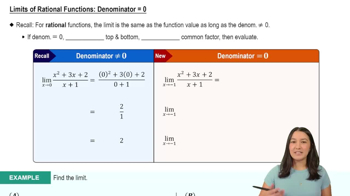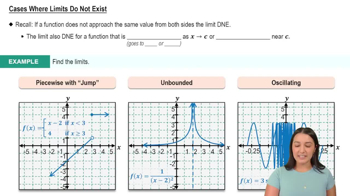The accompanying graph shows the total amount of gasoline A in the gas tank of an automobile after it has been driven for t days.
c. Estimate the maximum rate of gasoline consumption and the specific time at which it occurs.
 Verified step by step guidance
Verified step by step guidance Verified video answer for a similar problem:
Verified video answer for a similar problem:



 6:47m
6:47mMaster Finding Limits Numerically and Graphically with a bite sized video explanation from Patrick
Start learning